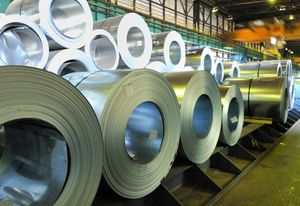
Wall Street's leading strategists are painting an increasingly optimistic picture for the financial markets, with a notable trend of raised S&P 500 targets for late 2025 and into 2026. This burgeoning confidence is overwhelmingly fueled by the transformative potential of artificial intelligence (AI) and a robust outlook for the upcoming corporate earnings season. As the third-quarter 2025 earnings season kicks off, investors are keenly watching whether corporate performance can justify the elevated expectations driven by AI-fueled enthusiasm.
The current market sentiment, observed in October 2025, reflects a profound belief in sustained corporate growth, particularly within sectors poised to capitalize on AI advancements. Despite macroeconomic headwinds, including a recent federal government shutdown, the market has demonstrated remarkable resilience, suggesting that the AI narrative is proving a powerful counterweight to traditional economic concerns. This period marks a significant moment where technological innovation is not just influencing individual stock performance but is recalibrating the broader market's valuation benchmarks.
Elevated Expectations: A Deep Dive into S&P Target Revisions and AI's Dominance
The latter half of 2025 has seen a flurry of S&P 500 target revisions from major financial institutions, signaling a broad consensus of bullishness. Goldman Sachs (NYSE: GS), for instance, revised its S&P 500 target in September 2025, projecting a 2% rise to 6600 by year-end 2025 and a 6% increase to 6900 by mid-2026, underpinned by an expected 10.6% earnings growth in 2025 and 13.6% in 2026. Not to be outdone, BMO Capital Markets (NYSE: BMO) escalated its year-end S&P 500 target to 7,000, embracing a bull-case scenario that could see the index reach 7,300. Deutsche Bank (NYSE: DB) echoed this sentiment, reiterating its high-end 2025 S&P 500 target of 7,000, forecasting approximately 16% further gains for American equities. Perhaps most strikingly, Evercore ISI analyst Julian Emanuel has a base target of 7,750 for the S&P 500 by year-end 2026 and has increased the probability of a "bubble" scenario, where the index could hit 9,000, to 30%. Other notable firms, including Bank of America (NYSE: BAC) (6,666 for end of 2025), UBS Global Wealth Management (NYSE: UBS) (6,600 for end of 2025), and Barclays (NYSE: BCS) (6,050 for end of 2025 and 6,700 for 2026), have also either raised or maintained similarly optimistic targets.
The primary catalyst for this widespread optimism is undeniably artificial intelligence. JPMorgan (NYSE: JPM) calculations reveal that since the launch of ChatGPT in November 2022, AI-related firms have been responsible for a staggering 80% of the S&P 500's earnings growth and 90% of capital expenditure (capex) growth. This indicates that AI is not merely a narrative but a tangible driver of corporate financials. The market's ability to largely disregard a federal government shutdown in October 2025 further highlights a deep-seated belief in AI's transformative power, overshadowing immediate political uncertainties.
However, amidst the euphoria, some cautionary voices highlight potential risks. Concerns include the possibility of an "increasingly circular" AI ecosystem, the technology failing to meet ambitious investor expectations, and the sustainability of valuations for some "AI pure-play" startups that may lack robust fundamentals. A recent October 2025 report further revealed that nearly three-quarters (72%) of S&P 500 companies now identify AI as a material risk in their public disclosures, citing reputational, regulatory, and operational concerns, suggesting a nuanced understanding of the technology's dual nature.
Corporate Beneficiaries and Potential Pitfalls in the AI Era
The AI boom is creating clear winners and losers within the public markets. Companies at the forefront of AI development and integration are experiencing significant boosts. Data storage companies like Seagate Technology (NASDAQ: STX) and Western Digital (NASDAQ: WDC), critical for housing the vast datasets AI requires, have seen their shares surge. Similarly, software firms such as Palantir (NYSE: PLTR) and Applovin (NASDAQ: APP) have witnessed their stock prices more than double or nearly triple, directly benefiting from AI-driven applications and demand. The "Magnificent Seven" tech stocks continue to rally significantly in 2025, their performance increasingly intertwined with AI advancements and their capacity to leverage this technology.
Sector-wise, technology stocks are projected to see a substantial 21% rise in profits due to AI. Unexpectedly, utilities are also poised for a 17.5% increase, driven by the massive infrastructure spending required to power AI data centers. Companies like Accenture (NYSE: ACN) have strategically launched dedicated AI business groups, reporting hundreds of millions in generative AI bookings, demonstrating how established players are actively adapting to and profiting from the AI revolution.
Conversely, companies that fail to innovate or integrate AI effectively into their operations risk being left behind. While the broad market is benefiting, "AI pure-play" startups with high valuations but unproven business models or lacking robust fundamentals face scrutiny regarding the sustainability of their growth. The increasing number of S&P 500 companies identifying AI as a material risk underscores that while AI presents immense opportunities, it also introduces new operational and competitive challenges that could negatively impact unprepared firms.
Broader Implications: AI's Reshaping of Industry and Market Dynamics
The current AI-fueled market rally and strategists' elevated S&P targets signify more than just a passing trend; they point to a fundamental reshaping of industry and market dynamics. AI is emerging as a transformative technological cycle, akin to previous industrial revolutions, driving unprecedented capital expenditure and earnings growth across various sectors. The market's resilience in the face of a federal government shutdown in October 2025 further underscores the profound belief in this technological shift, suggesting that the AI narrative is powerful enough to override traditional macroeconomic concerns.
This pervasive integration of AI is creating significant ripple effects. Beyond the direct beneficiaries in tech and data, industries like utilities are experiencing a surge in demand due to the immense power requirements of AI infrastructure. This interconnected growth suggests a broader economic impact where AI acts as a catalyst for innovation and investment across the supply chain. Regulatory and policy implications are also coming into sharper focus, as evidenced by the increasing number of S&P 500 companies citing AI as a material risk. This trend could lead to heightened regulatory scrutiny regarding data privacy, ethical AI use, and market concentration, potentially shaping future policy frameworks.
Historically, periods of rapid technological advancement have often been accompanied by "bubble fears." While the current optimism is strong, some analysts draw parallels to past tech booms, cautioning about the potential for overvaluation if AI's promised productivity gains do not materialize as rapidly or broadly as expected. The concentration of market capitalization in a few mega-cap stocks highly leveraged to AI, as highlighted by Morningstar, suggests that the market has little "margin for error" should AI growth decelerate or face unexpected hurdles.
The Road Ahead: Navigating Opportunities and Challenges
Looking ahead, the immediate focus for the market will be the third-quarter (Q3) 2025 earnings season, which commenced in mid-October. Analysts tracked by FactSet anticipate S&P 500 companies to report a robust 7.9% year-over-year earnings growth for Q3 2025, marking the ninth consecutive quarter of expansion. Goldman Sachs's David Kostin projects a 7.2% increase for the quarter, with large banks and AI/cloud companies expected to deliver particularly strong results. The performance during this earnings season will serve as a crucial test of whether the AI-driven optimism is translating into tangible corporate profits.
Longer-term, the outlook remains largely positive, with consensus forecasts projecting an acceleration in S&P 500 earnings growth to 12% in Q4 2025, continuing into 2026 with an anticipated 15% per-share operating earnings growth. This sustained growth is expected to be supported by resilient economic conditions, a dovish Federal Reserve stance (including a 0.25% rate cut in September 2025 and expectations for further cuts), and a broadening market rally beyond the mega-cap tech stocks. Historically, the fourth quarter also presents a seasonal tailwind for the S&P 500, averaging a 2.9% gain.
However, challenges persist. The sustainability of AI valuations, particularly for companies whose growth is almost entirely predicated on future AI adoption, remains a key concern. The risk of an "increasingly circular" AI ecosystem, where growth is primarily driven by internal demand rather than widespread external adoption, could limit long-term potential. Investors will need to assess whether AI can meet the lofty expectations set by strategists and the market, and whether the technology's benefits can truly broaden across the economy to justify current valuations.
Wrap-Up: AI's Enduring Impact on Market Trajectories
In summary, the financial markets in October 2025 are characterized by a pronounced wave of optimism, with Wall Street strategists significantly raising their S&P 500 targets. This confidence is overwhelmingly driven by the transformative power of artificial intelligence, which is not only fueling earnings and capital expenditure growth but also reshaping investor sentiment and market resilience. The upcoming Q3 2025 earnings season will be a critical juncture, providing concrete data to validate or challenge the current AI-fueled market narrative.
Moving forward, the market is poised for continued growth, buoyed by strong earnings forecasts and supportive macroeconomic factors. However, this bullish outlook is tempered by legitimate concerns regarding the sustainability of AI valuations and the potential for the technology to fall short of hyper-inflated expectations. Investors should remain vigilant, scrutinizing Q3 earnings results for tangible evidence of AI's impact, monitoring the broader adoption and development of AI technologies, and keeping a close eye on macroeconomic indicators and Federal Reserve policy. The enduring significance of AI in shaping market trajectories is undeniable, and its ultimate impact will depend on its ability to translate innovation into widespread, sustainable economic value.
This content is intended for informational purposes only and is not financial advice





